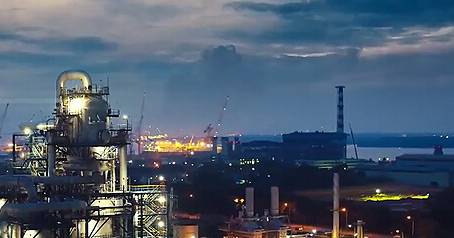Eco-Friendly Blue Dyes for Sustainable Fabric Manufacturing Solutions
Natural Blue Dye for Fabric Manufacturers Embracing Sustainability and Tradition
In recent years, the fashion and textile industry has witnessed a significant shift towards sustainable practices. As eco-conscious consumers demand greener alternatives, fabric manufacturers are exploring natural dyes as a viable solution. Among these, natural blue dyes are gaining popularity due to their vibrant hues, environmental safety, and cultural significance. This article delves into the benefits and methods of using natural blue dyes in fabric manufacturing and the implications for sustainable fashion.
The Significance of Blue Dye
Historically, blue dye has held a prominent place in various cultures worldwide, with indigo being one of the most recognized sources. Derived from the leaves of the Indigofera plant, indigo dye has been used for centuries in regions like Asia, Africa, and South America. Its unique ability to produce rich, deep blue colors made it a highly sought-after commodity, often referred to as “blue gold.” In contemporary fabric manufacturing, the revival of natural blue dye underscores the blend of tradition and innovation, appealing to a market that values authenticity and sustainability.
Environmental Benefits
The shift towards natural blue dyes is primarily driven by environmental considerations. Conventional synthetic dyes often involve harmful chemicals and processes that pollute water bodies and pose health risks to workers. Natural dyes, on the other hand, are biodegradable, non-toxic, and produced from renewable resources. By incorporating natural blue dyes, fabric manufacturers can significantly reduce their environmental impact, contributing to cleaner production processes and promoting biodiversity.
Moreover, using natural dyes supports sustainable agriculture. Many plants used for dye extraction can be cultivated with minimal chemical inputs, fostering healthier ecosystems. This aligns with the growing consumer movement toward ethical fashion, where buyers prioritize brands that prioritize environmental stewardship.
Techniques for Dyeing with Natural Blue
natural blue dye for fabric manufacturer

Fabric manufacturers can employ various techniques to utilize natural blue dyes effectively. One popular method is the “indigo vat dyeing” process, which allows for deep, rich colors. This method involves creating a fermentation vat, where indigo is reduced to its soluble form, allowing fabrics to be dipped repeatedly until the desired shade is achieved.
Another technique is direct application, where the dye is applied to the fabric using brushes or other tools, ideal for creating intricate designs. Additionally, tie-dyeing and shibori are traditional resist-dyeing techniques that create unique patterns while utilizing indigo dye.
It is essential for manufacturers to experiment with mordants—substances that fix the dye to the fabric—to achieve a wider range of blue hues and to enhance colorfastness. Natural mordants like alum, tannin, or iron can be used to achieve different shades, offering diversity in product offerings.
Capturing Market Trends
As consumers become more environmentally conscious, manufacturers offering natural blue dyed fabrics can differentiate themselves in a crowded marketplace. Brands that showcase their commitment to sustainability attract a loyal customer base looking for authentic, eco-friendly products. Furthermore, storytelling around the sourcing and dyeing process not only adds value to the product but also connects consumers to the rich cultural history behind natural dyes.
Conclusion
The use of natural blue dye in fabric manufacturing represents a harmonious balance of tradition and modern sustainability. By embracing these natural alternatives, manufacturers can respond to the growing demand for eco-friendly textiles while celebrating the rich history of dyeing that has shaped the industry. As we move forward, the integration of natural dyes into contemporary fabric production can play a pivotal role in fostering a more sustainable future for the fashion and textile sectors. The journey towards sustainability is not just about changing materials; it’s about revitalizing ancient practices, supporting local economies, and ultimately weaving a greener tapestry for generations to come.
-
The Timeless Art of Denim Indigo Dye
NewsJul.01,2025
-
The Rise of Sulfur Dyed Denim
NewsJul.01,2025
-
The Rich Revival of the Best Indigo Dye
NewsJul.01,2025
-
The Enduring Strength of Sulphur Black
NewsJul.01,2025
-
The Ancient Art of Chinese Indigo Dye
NewsJul.01,2025
-
Industry Power of Indigo
NewsJul.01,2025
-
Black Sulfur is Leading the Next Wave
NewsJul.01,2025

Sulphur Black
1.Name: sulphur black; Sulfur Black; Sulphur Black 1;
2.Structure formula:
3.Molecule formula: C6H4N2O5
4.CAS No.: 1326-82-5
5.HS code: 32041911
6.Product specification:Appearance:black phosphorus flakes; black liquid

Bromo Indigo; Vat Bromo-Indigo; C.I.Vat Blue 5
1.Name: Bromo indigo; Vat bromo-indigo; C.I.Vat blue 5;
2.Structure formula:
3.Molecule formula: C16H6Br4N2O2
4.CAS No.: 2475-31-2
5.HS code: 3204151000 6.Major usage and instruction: Be mainly used to dye cotton fabrics.

Indigo Blue Vat Blue
1.Name: indigo blue,vat blue 1,
2.Structure formula:
3.Molecule formula: C16H10N2O2
4.. CAS No.: 482-89-3
5.Molecule weight: 262.62
6.HS code: 3204151000
7.Major usage and instruction: Be mainly used to dye cotton fabrics.

